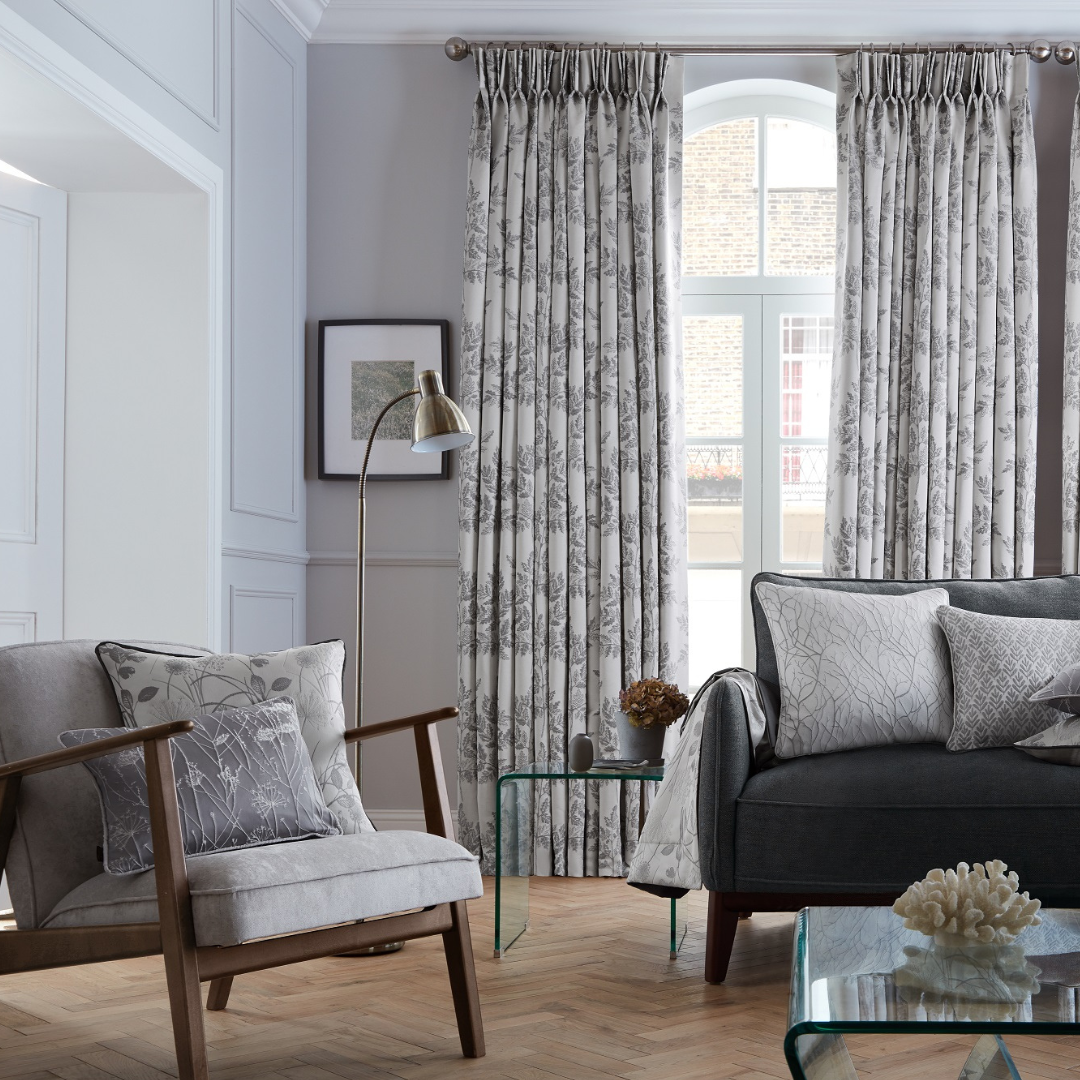
Choosing the right window treatments can be complicated, especially when unsure of what terminology to use. We have put together a list of common confusing terms our customers often use wrong to help you better search and pick the right window coverings.
|
Confusing Window Treatments Terms:
|
|
|---|---|
|
Curtain Poles vs Rods
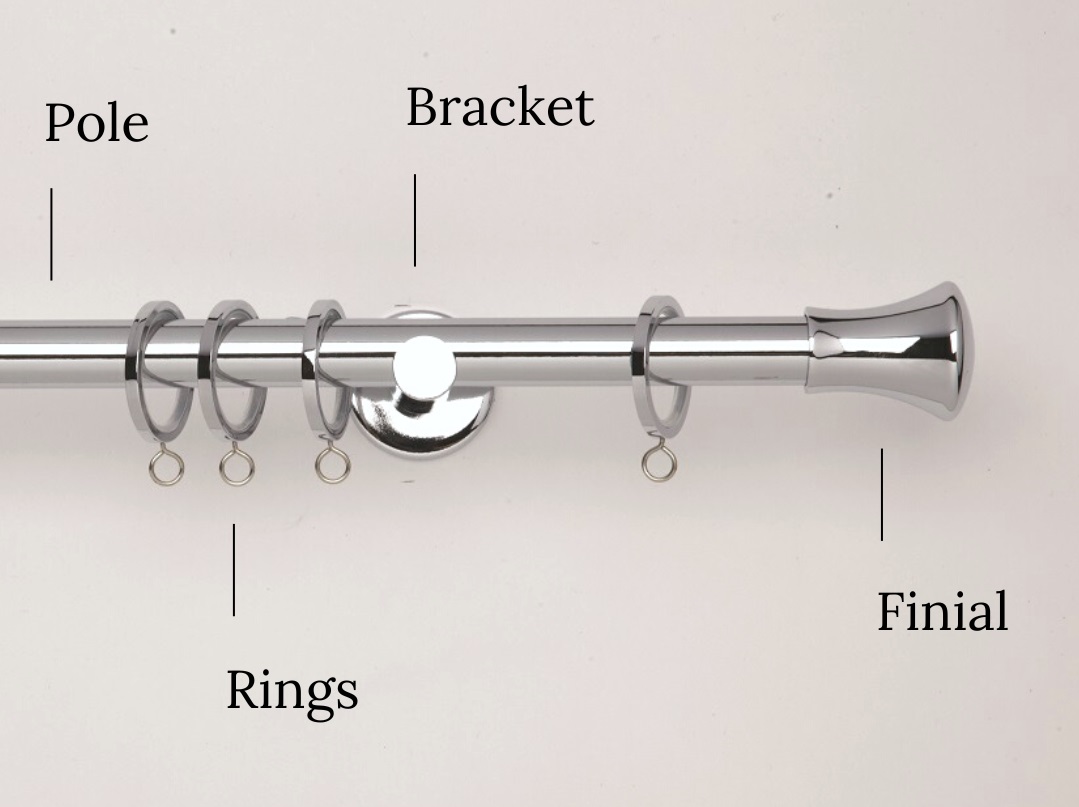
Curtain Pole
As you probably already know, a curtain pole is a very established word. Based on the Latin palus ‘stake’, a “pole” came to old English from Germany which meant “a long, slender, tapering piece of wood”.
A curtain pole is a pole from which a curtain is hung in front of a window, door, etc. (Collins Dictionary)
Curtain Rod
Rod is an old word first used before the 12th century. The word was borrowed from the North Germanic language of medieval Norway, Iceland, Denmark, and Sweden. Originally it meant "a stick of wood” for a specific purpose (a walking stick, instrument of punishment). In modern days rod is a long, narrow pole on which you hang curtains (Collins Dictionary) and is more often used in American English.
As you can see, the difference is very subtle, and many people use these words interchangeably. However, the correct word usage in British English is curtain pole as it is a generic term.
Related: What are the parts of the curtain pole set?
Curtain Tracks vs Rails
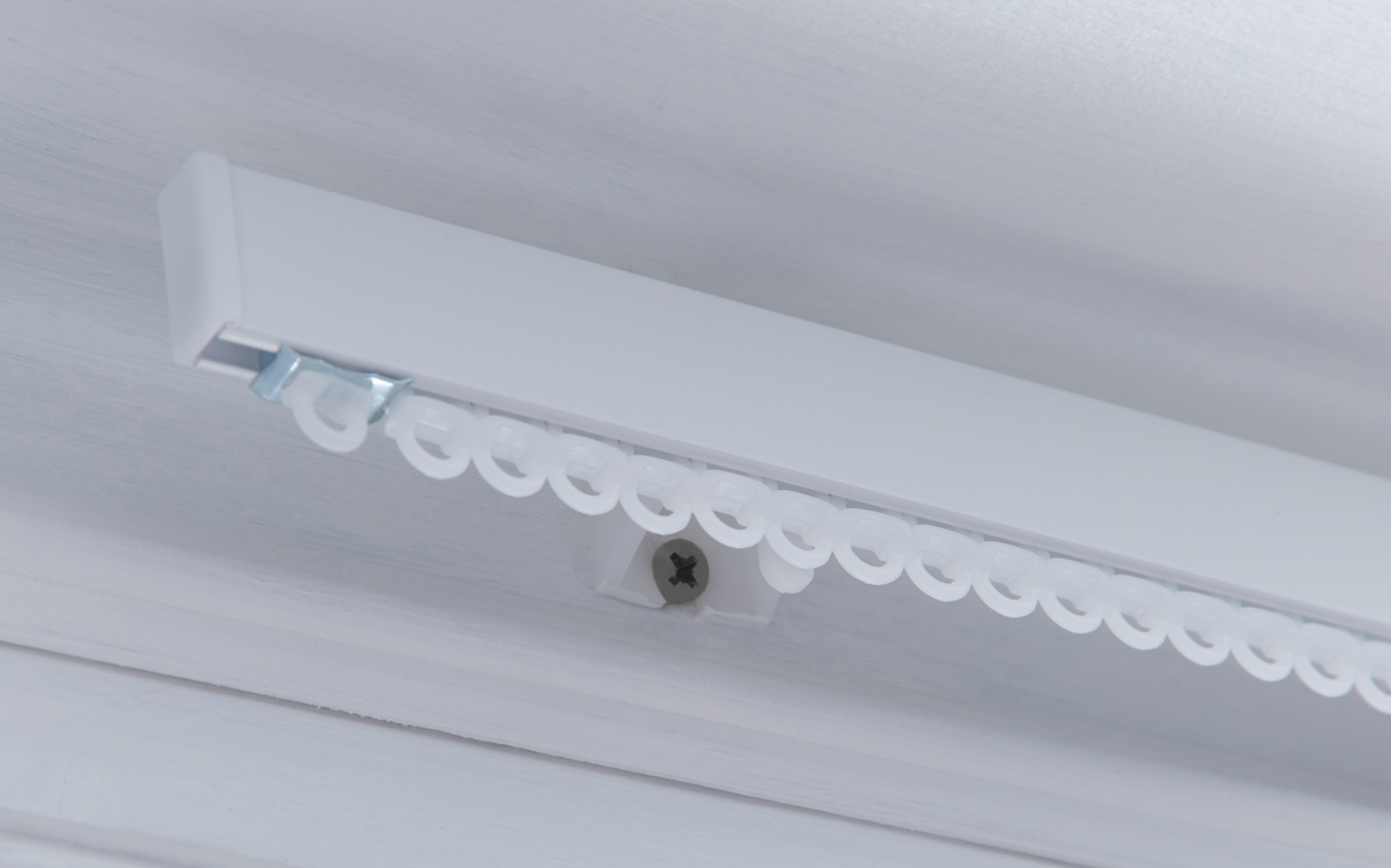
Rail is probably the most puzzling term in the whole window dressing industry. This is due to the contradictive theories of where the word came from.
Some experts suggest thatboth terms came into the world of window furnishing from the railway industry. In fact, both terms are synonyms and mean a plastic or metal system with a channel for gliders to run from side to side allowing to open and close curtains, which resembles a railway track. Thus, rails should NOT be confused with a pole or a rod that does not require gliders.
To put it simply: rails=tracks≠poles
According to another theory, the word rail used to (and still) mean a generic term for “a bar fixed to the wall for hanging things on” (Oxford Dictionary). Thus, we also have “picture rail” and “towel rail” terms.
According to this, a rail = a pole.
Many dictionaries and search engines can give you contradictive explanations of these terms, so we recommend using the terms "poles" or "tracks" instead.
Curtains vs Drapes
Curtains were introduced to England in the late 16th century from France. Before that, English used wooden shutters to keep out light and cold. The first curtains were one piece of fabric hung on an iron rod and were mainly used to hang over doors.
Drapery was, however, used to partition off parts of the great hall. The hangings would be both decorative and practical; they were helpful in reducing the draughts of the chilly English weather. These hangings were suspended by rings on rods attached to the walls or columns. Wall hangings were also popular as decorations and for going some way to keep out the chill of the cold stone walls.
In modern days, drapes are synonyms for curtains, and the term is primarily used in American English. Some Americans use drapes to mean a formal curtain, larger and heavier with a pleated heading. In British English the correct usage is curtains.
Related: Common Curtain Mistakes to Avoid
Blinds vs Shades
Another pair of terms, where one word is used more in British English, and another in American English. In Britain, blind is an umbrella term for any type - Vertical, Venetian, Roman, or Roller.
In the US, there is a difference between blinds and shades. Thus, blinds are window treatments made of slats and can be made of wood, vinyl, or aluminum, and the slats can be adjusted using a cord or pulley system. Shades, on the other hand, consist of a single piece of fabric that is attached to a roller or spring system. They can be opened by pulling the fabric up or down. Shades offer more privacy than blinds and typically do not allow light to pass through them.
Related: Guide to Curtain Pole Brackets
Curtain Holdbacks vs Tiebacks
Many of us confuse holdbacks and tiebacks, thinking they are the same. Indeed, they are the types of curtain accessories with the purpose of holding your curtains open. However, curtain holdbacks can usually be metal or wood and are mounted to a wall. Tieback, on the other hand, is made of pieces of fabric and hangs directly from the curtain.
Simply remember - one holds the curtain back, and the other ties it back. Thus, to hold the curtain, you need some strength, so holdbacks are made either from metal or wood. To tie a curtain back, all you need is a piece of fabric, tiebacks are soft and made from fabrics.
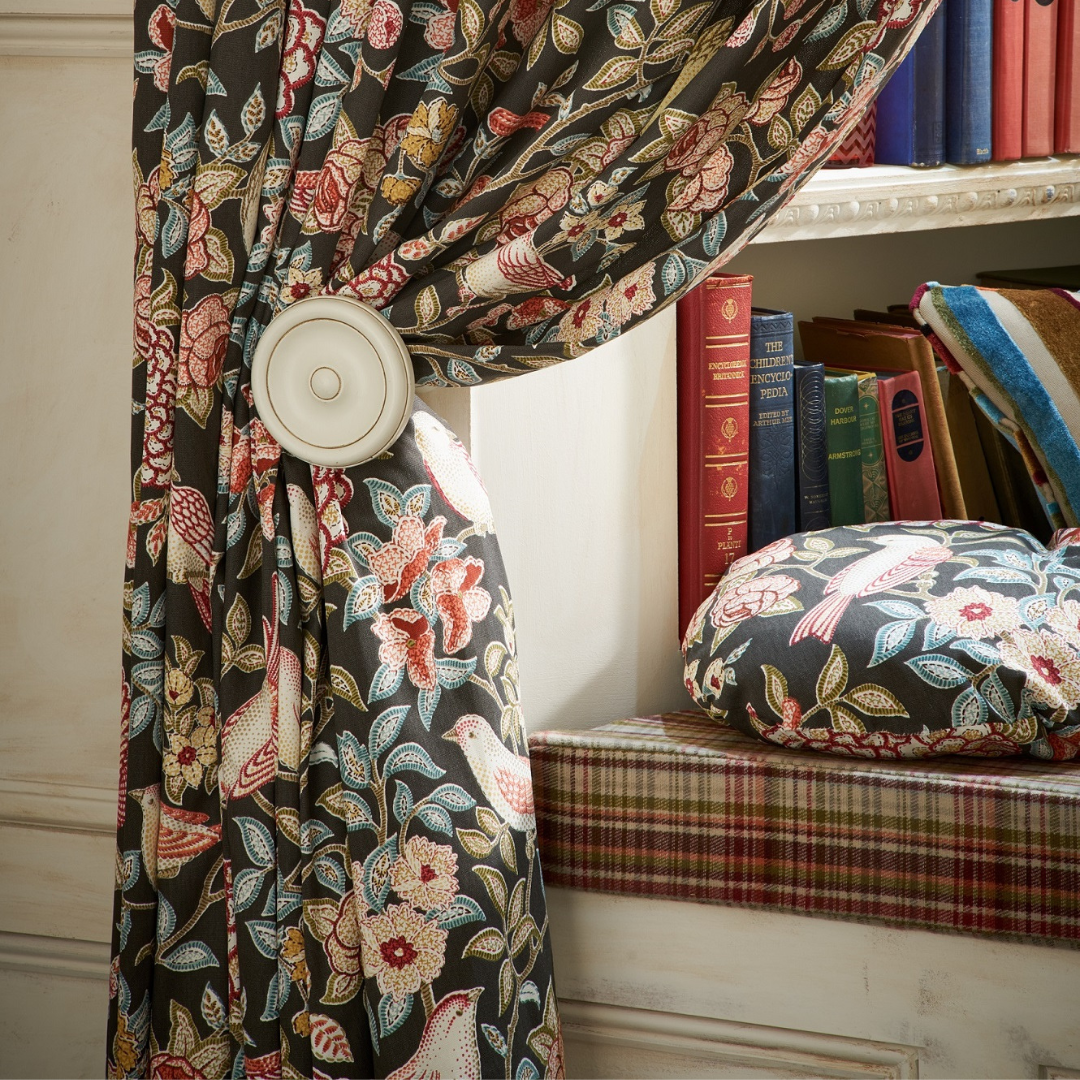 |
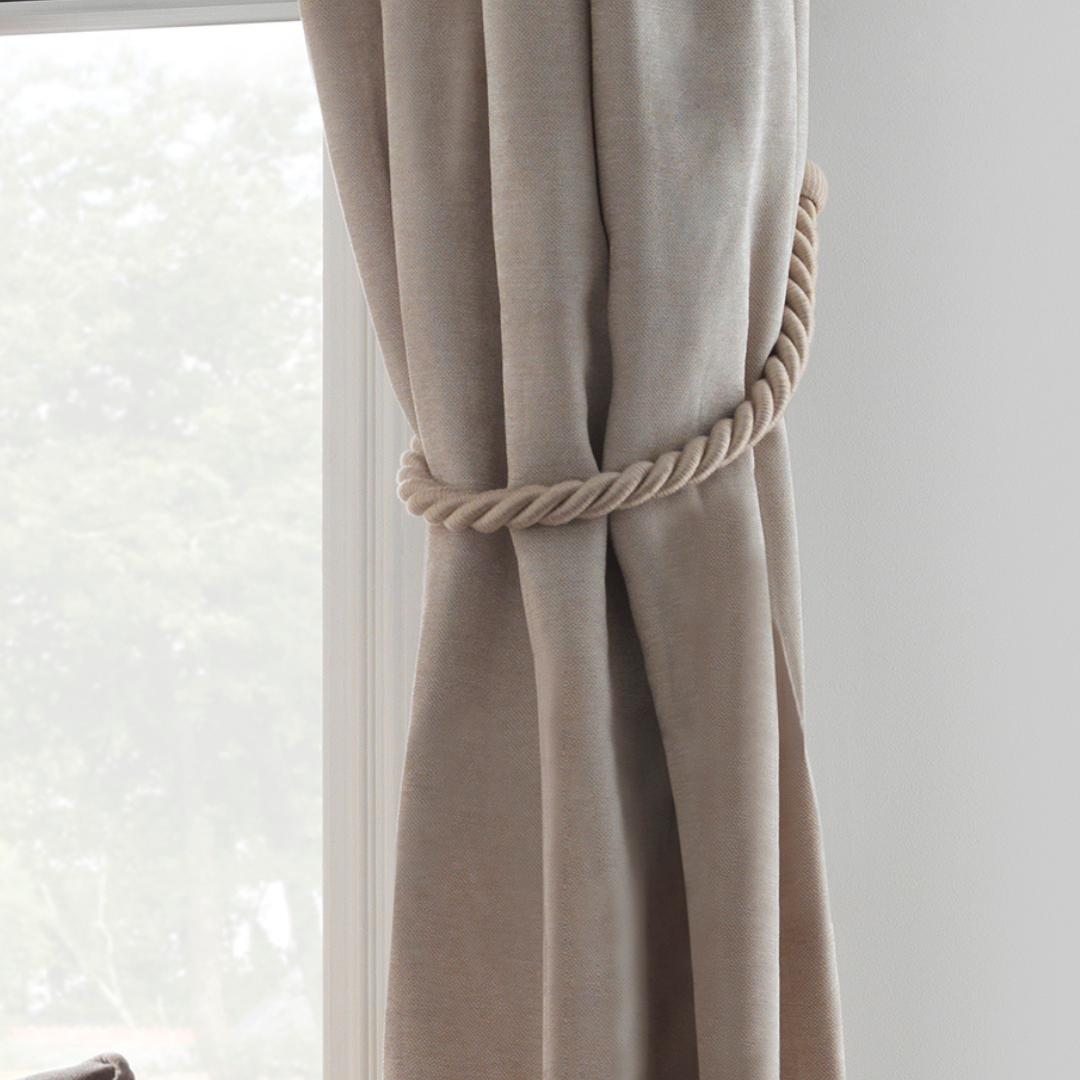 |
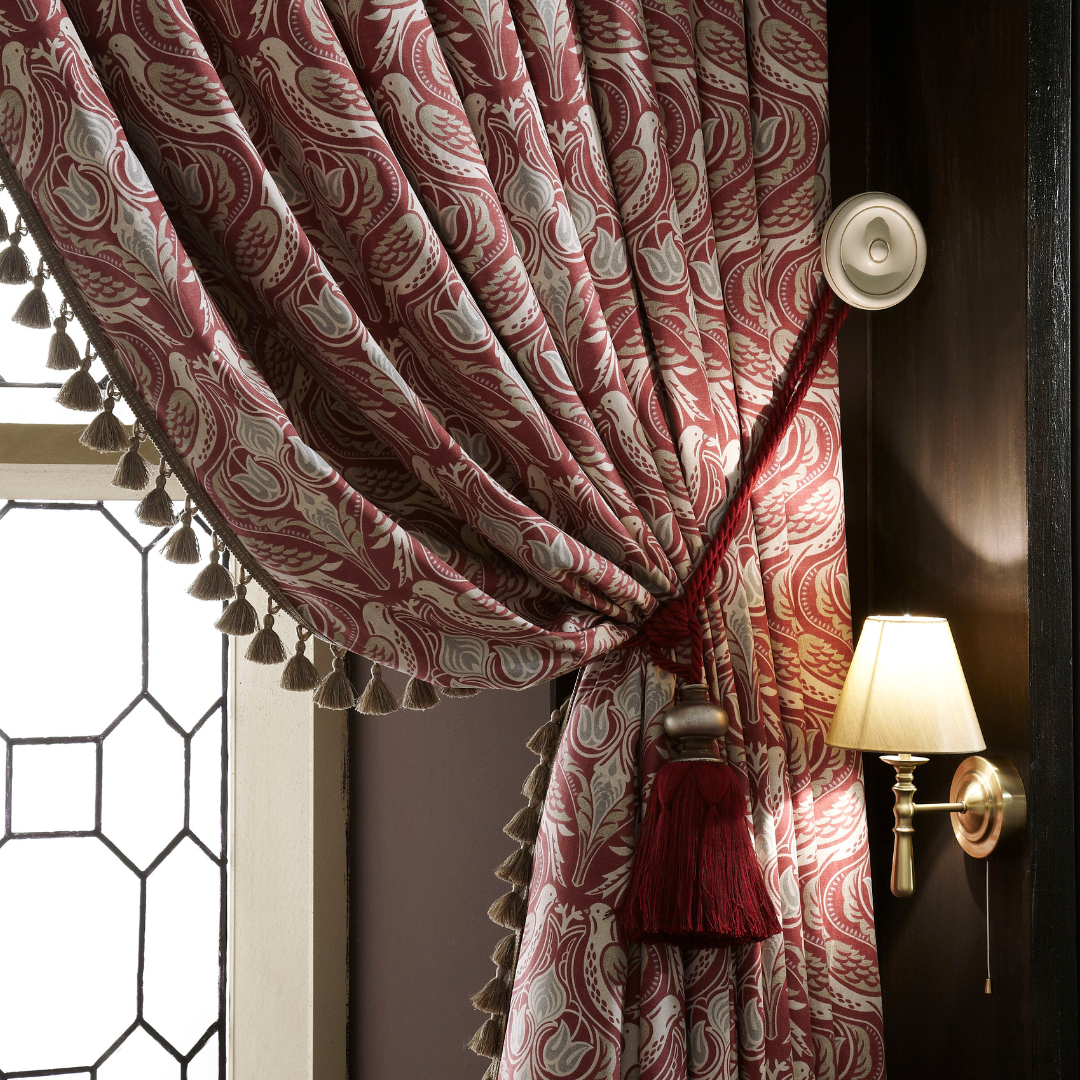 |
| A holdback | A tieback | A holdback and a tieback |
Related: How to choose curtain holdbacks?
These were the most common confusing terms in the window treatments glossary. If you have more examples or questions, please let us know in the comment section below!
And please share this post with friends on social media!







